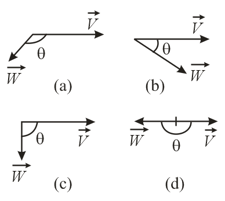The time dependence of the lengths of the paths of two bodies moving in a straight line is given by curves and , respectively. What curve corresponds to accelerated motion and what curve to decelerated motion?
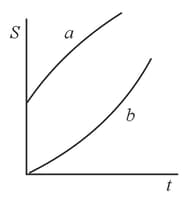


Important Questions on Fundamentals of Mechanics
A material particle is moving along a straight line in such a manner that its velocity varies as shown in the figure. At which moment in time numbered successively on the time axis will the acceleration of the particle be maximal? How should one use the graph to determine the average velocity of motion over the time interval from to ?
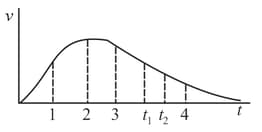
The velocity of a particle moving in a straight line varies with time in such a manner that the vs. curve is represented by one half of an ellipse. The maximal velocity is and the total time of motion is . What is the path traversed by the particle and the average velocity over ? Can such motion actually occur?

The velocity of a particle decreases in relation to the path traversed according to the linear law . After what time will the particle get to a point that lies on the axis of abscissas distant from the origin of coordinates?
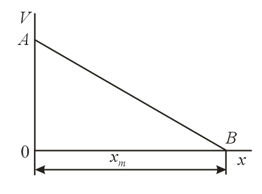
The velocity of a particle moving in a straight line increases according to the linear law . How does the acceleration change in the course of such motion? Does it increase or decrease or stay constant?
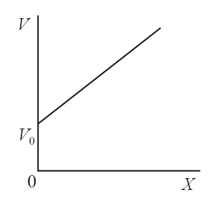
The figure shows the "timetable" of a train, the dependence of the speed of the train on the distance traveled. How can this graph be used to determine the average speed over the time interval it took the train to travel the entire distance?
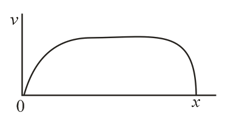
A rod of length leans by its upper end against a smooth vertical wall, while its other end leans against the floor. The end that leans against the wall moves uniformly downward. Will the other end move uniformly, too?

At a certain moment in time the angle between the velocity vector of a material particle and the acceleration vector of that particle is . What will be the motion of the particle at this moment for different s: rectilinear or curvilinear, accelerated or uniform or decelerated?
